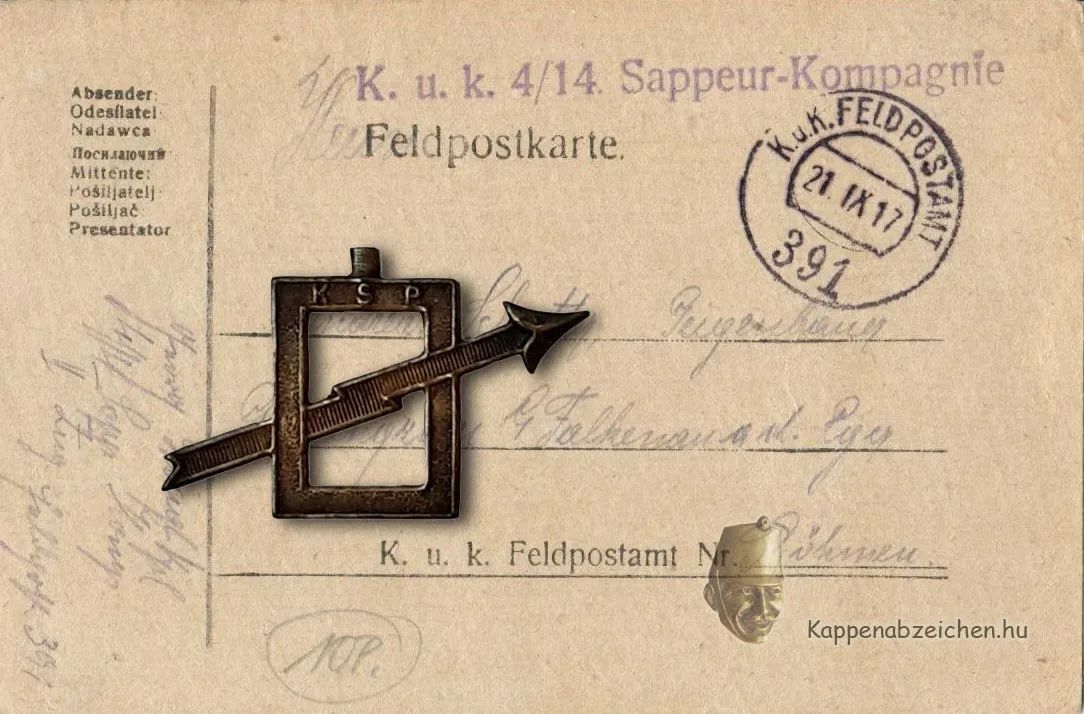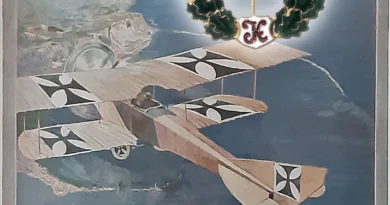Badge of the pioneers’ explosives curse in Krems
Post by Gábor Széplaki.
For a long time, I have had pieces in my collection that are clearly related to a specific topic and period, but I have not yet found any regulations or written sources that mention them. Until now one of them was the now-discussed badge.

The shape and symbolism of the badge are mostly reminiscent of the machine gun cap badge, mainly because of the lightning motif. Since the machine gun cap insignia is modeled after the map symbol, I first searched for map markings, but was unsuccessful. I asked other collectors as well, but no one could provide a meaningful answer on the subject. It has been confirmed that it is a cap insignia used by the Austro-Hungarian monarchy during World War I, but I have not been able to get more specific information.
The breakthrough came when I found the following notation on an illustrative painting from 1917:

According to this, the badge was made for the participants of the pioneers’ explosives course in Krems. The symbolism could also be interpreted after that: the badge is modeled after an explosive device/box. The KSP abbreviation can be solved as Krems Spreng Pioniere or Kurse für Sappeure und Pioniere or Kurse SPreng (explosives course).
Krems an der Donau is one of the independent provincial towns in Lower Austria. On August 22, 1914, following the approval of the Emperor Franz Joseph I, the construction and fortification works of the Krems bridgehead began. The military wanted to create a chain of fortresses here around the Mautern-Stein road and railway bridges on the Danube, with the aim of being able to protect the crossings against a possible enemy attack and to ensure the safe crossing of large troop units across the river. However, the fortress was never finished, just as the enemy attack did not take place in the area.
Because of the above project, the city had a diverse military life. Numerous artillery, fortress artillery, Landwehr and technical units were stationed in the region. Among the latter, a searchlight and signal squad was mentioned in connection with the city, as well as the 2nd sapper battalion, which was the code name for the gas and flame thrower battalion. After the major reorganization of the armed forces in 1917, these were named the 61st and 62nd Pioneer Battalions.
I found a mention of the course related to the badge only in the diary of Archduke Joseph (The World War, as I saw it): “At that time, I requested experts from the special artillery battalion in Krems for the destruction of open trench works with explosive charges.”

One of the two correspondence letters included with the post shows the stamp of the Szeged pioneer battalion, and there is also a small letter seal. This is also from Szeged and depicts the moment of a mine explosion. This is perhaps the practical utilization of the studies in Krems in the picture.




